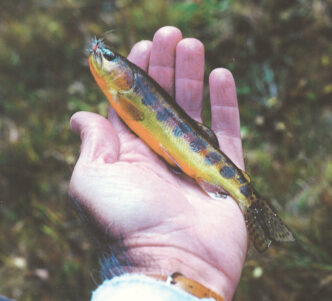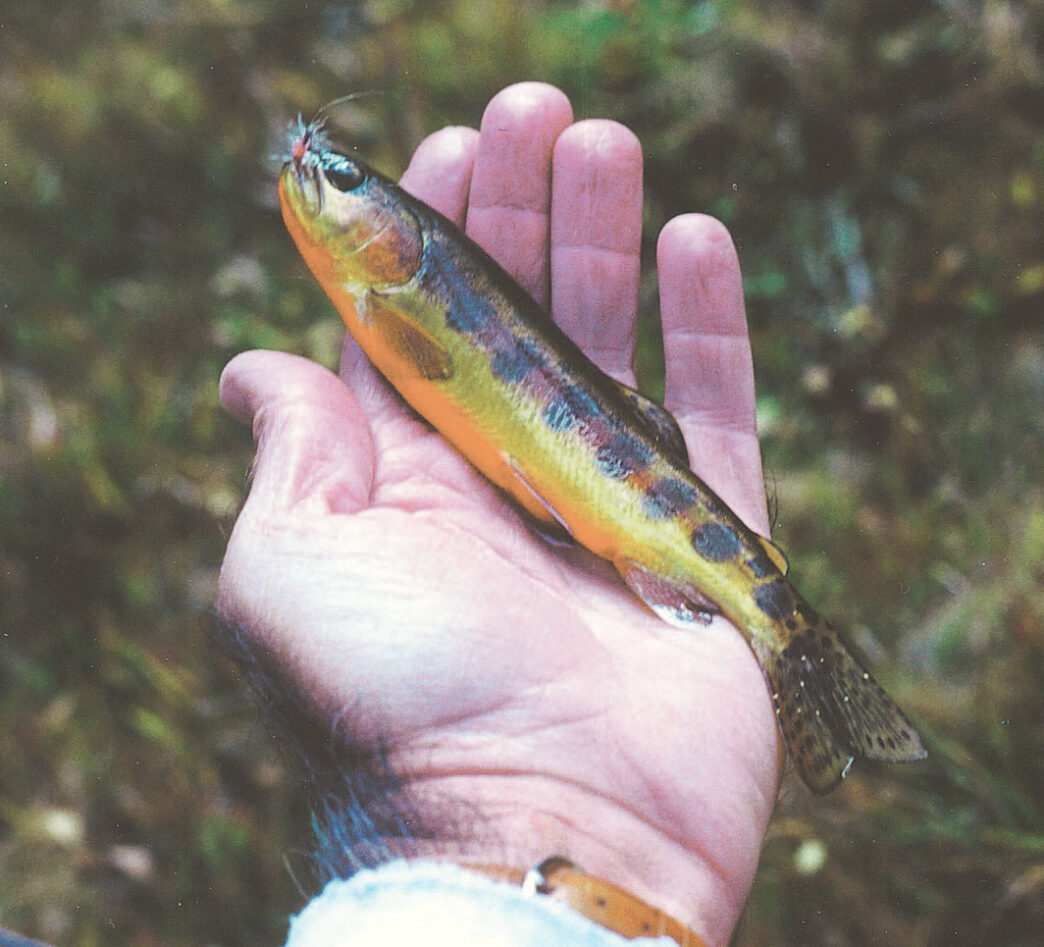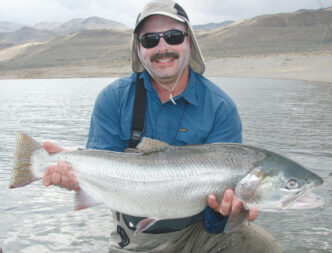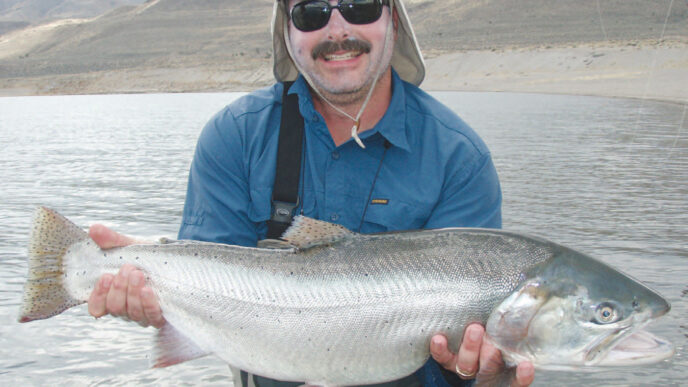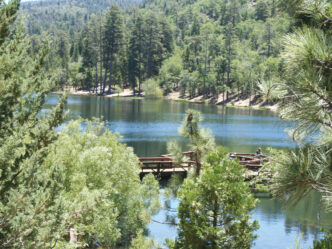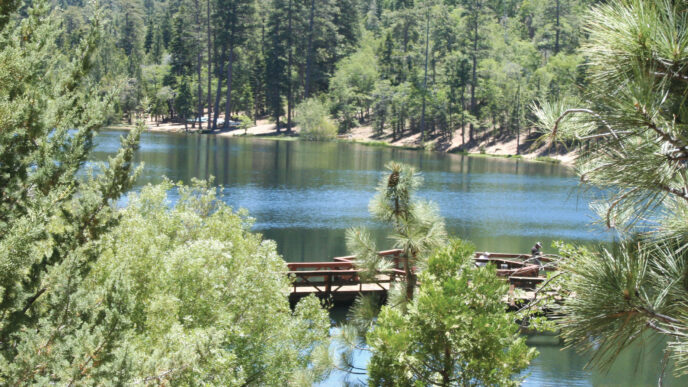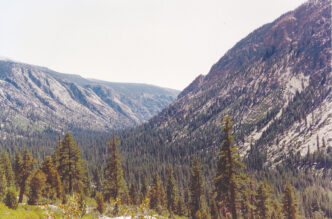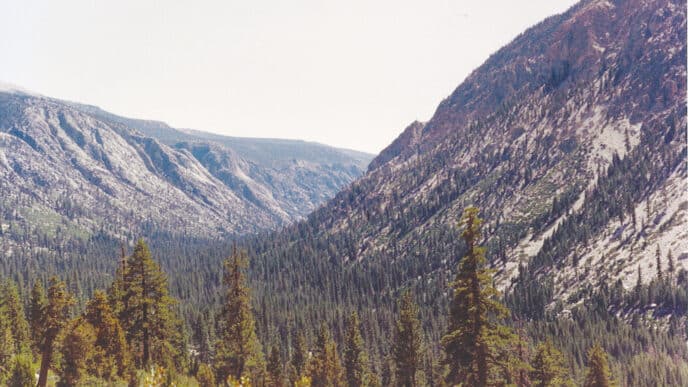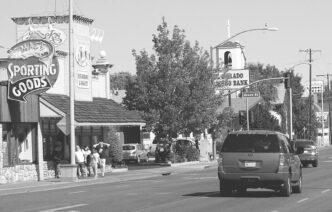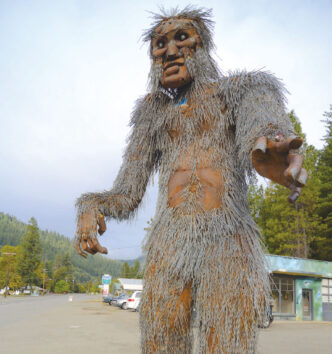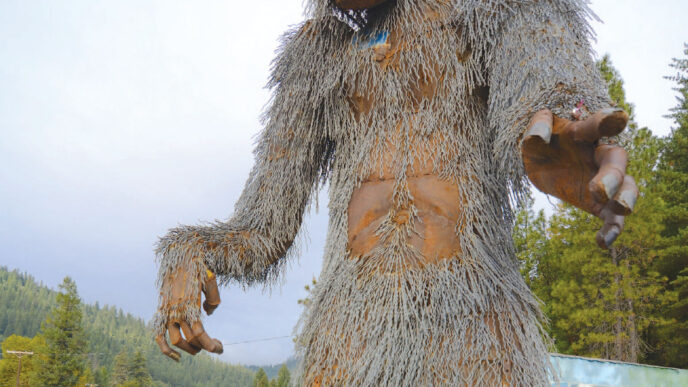Many anglers tend to focus on easy-to-reach waters, and although this is certainly a wise approach if you wish to maximize the time you spend fishing, the downsides are fisheries that are stressed from too much angling pressure and the likelihood of encountering other fishermen, maybe even crowds of them. The fact of the matter, though, is that if you’re willing to study a map and hike even a little ways, you can not only escape the hordes, you can find yourself in a secluded, pristine setting, blissfully angling for wild fish. In other words, you will have entered the angling equivalent of Shangri-La.
California’s mountains are full of Shangri-Las. To get you into a mood for exploration, one of my favorites is a high-altitude, east-side-Sierra trout stream that’s just a little more than a mile’s hike from where you park your vehicle. And it contains golden trout. In fact, the possibility exists for the stealthy angler to catch and release many goldens in a single outing. I’m talking about the South Fork of Cottonwood Creek.
Our trip to this particular Shangri-La begins in the sleepy desert community of Lone Pine, located on Highway 395 about sixty miles south of Bishop. Driving west toward the high peaks after turning at the only traffic signal in Lone Pine, you turn left onto Horseshoe Meadow Road about four miles from town. After about ten miles, you begin climbing the eastern escarpment of the Sierra. This narrow mountain road (nicknamed “the Z”) has six hairpin turns and is quite steep, with incredible vistas to distract you from noticing the relative absence of protective railings. Yikes! Drive carefully.
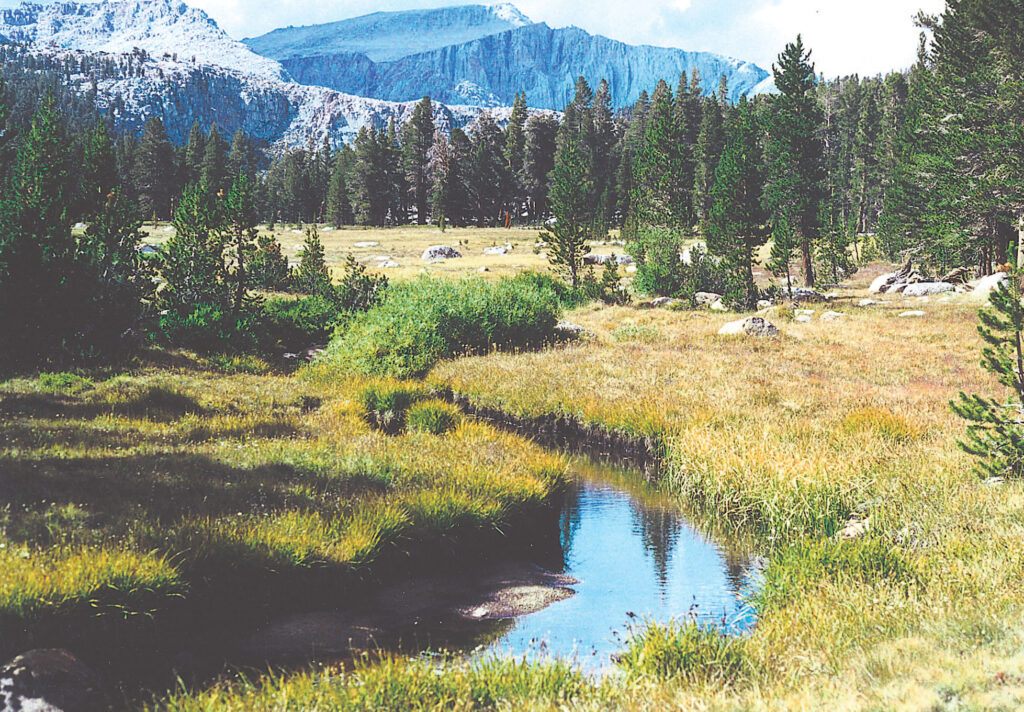
After reaching the parking lot for Cottonwood Lakes, you’ll be at an elevation of approximately 10,000 feet, just below the timberline. The sky here always appears to be a deeper shade of blue, more so than elsewhere in the Sierra, it seems. There’s a one-night-only campground for backpackers staging to enter the Golden Trout Wilderness. Water is available from several spigots, as well as in some restrooms. An informative display greets you at the trailhead, but although it has a map of the area, you would be wise to bring your own topographic map when entering the backcountry.
After a walk of about thirty minutes you first reach the South Fork of Cottonwood Creek, where you use the log crossing to continue your hike. Because of heavy traffic here (foot and horse) and the brushy nature of the streamside, this isn’t the best place to cast your line, although a few fish often can be seen just downstream of the crossing, and perfect spawning gravel is noticeable in the crystal-clear water.
From here, most people continue up the main trail leading to the Cottonwood Lakes, some three miles away. The main stem of Cottonwood Creek parallels the trail much of the way, and fishing there can be good. But because the streambed is much deeper than the South Fork’s and is rarely filled even halfway, you end up casting downward toward the water, three or four feet in some spots, and as a result you can spook lots of fish.
Cross the stream and just a few yards beyond it turn left onto an inconspicuous, but maintained trail. There are no signs here — at least no written ones. But your topo map will likely show this trail, which leads to South Fork Lake, a total distance of 3.5 miles from the parking lot. The lake is doable for a day hike, provided you’ve brought food and water or a water-filter bottle. The golden trout at the five-acre lake can reach 14 inches in length, although 10 inches is more likely. But don’t expect to catch as many trout there as you will in the creek that it feeds.
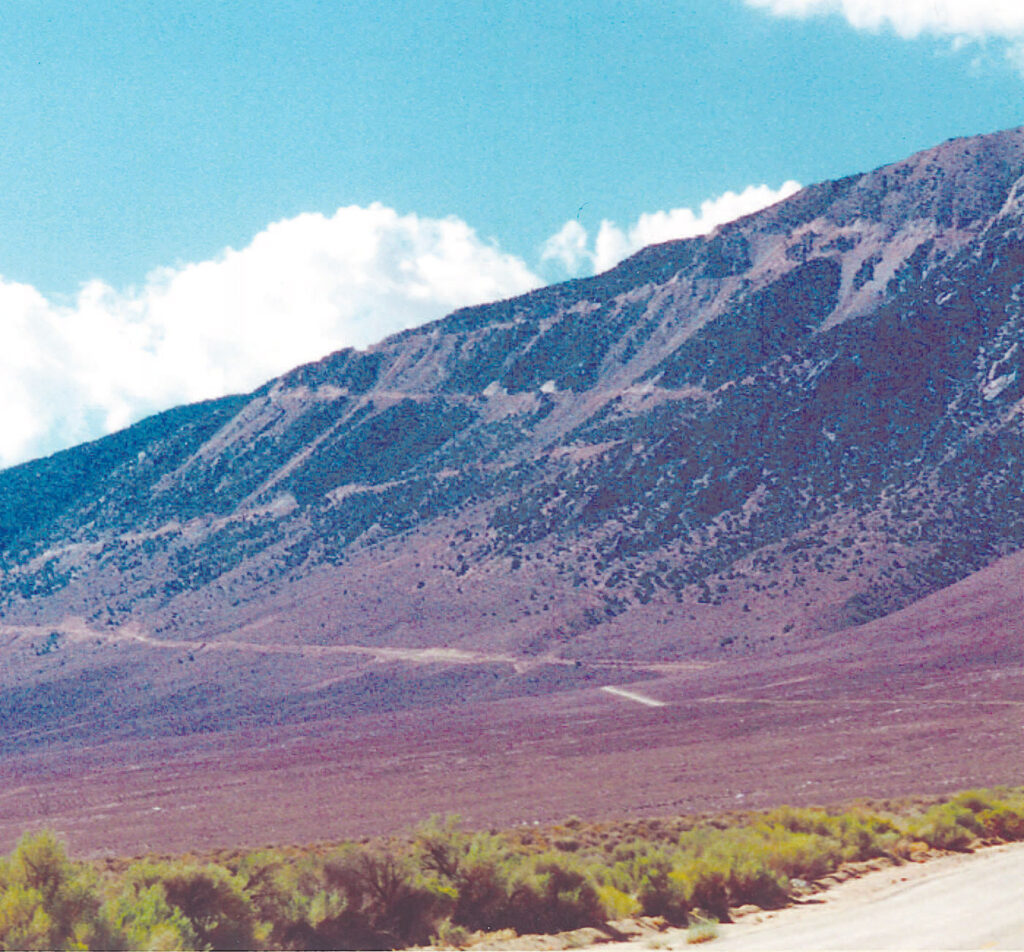
As you make your way up the trail, for about a mile or so the gradient is fairly mild with no long, steep stretches, unless you’re going on to the lake. But we’re not, because we’ve just arrived in Shangri-La. Look around you. You’ll notice few if any people. How can this be? The parking lot was filled with cars. Where is everybody?
Most people came up here to backpack to the higher lakes. The same goes for anglers using the pack outfit next to the trailhead. They usually stay on the main trail to Cottonwood Lakes, so you rarely see a soul on this side trail, and I’ve never seen another person fishing the South Fork of Cottonwood Creek in the 15 years I’ve been going there. That’s probably because it requires an effort to reach, and frankly, many anglers aren’t interested in the smallish goldens that the stream holds. They’re mostly 4 to 8 inches long, but with brilliant red or orange bellies, lemon sides, noticeable parr marks, a cherry stripe down their lateral line, pink on their gill plates, and most of their black spots concentrated near the tail. These are Volcano Creek goldens, and they’re about as pure a strain as can be found anywhere in the Sierra. A 10-inch fish would be considered a trophy here.
This is dry-fly country. Leave the nymphs and Woolly Buggers at home, because you won’t need them. This little stream is not for the novice fly fisher, though. It requires a stealthy approach to avoid spooking the little guys. Quite often, you’ll find yourself adopting a low profile and casting from your knees about 15 to 20 feet back from the creek channel. Keeping the fly line off the water typically results in more hits, too. Mastering this approach, along with avoiding long casts and learning which holes to hit and which ones to pass up, will result in an unforgettable fishing experience.
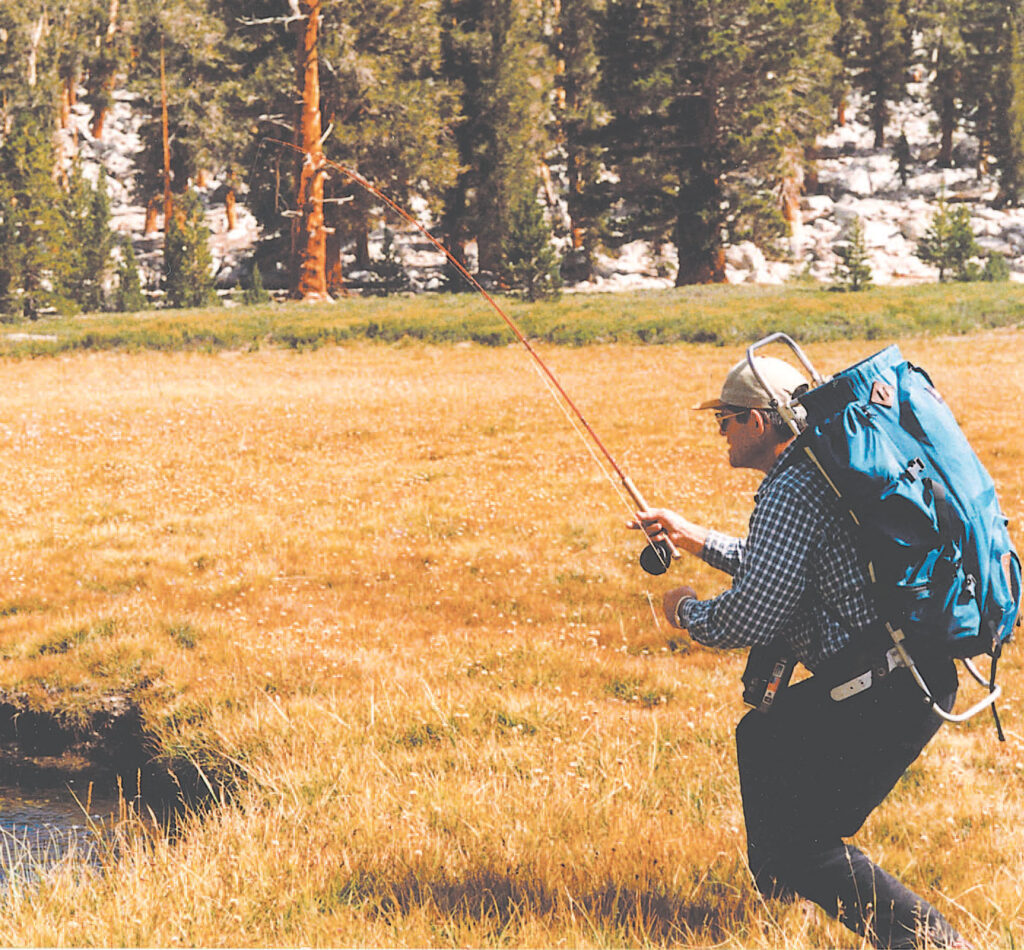
After reaching the steepest portion of the trail, instead of following it to a meadow, it’s best to angle left to the nearby creek to fish some of the more productive holes. You’ll be fishing in tight quarters initially, but will gradually work your way upstream into a clearing void of obstacles. Avoid the slow, shallow stretch in the meadow, because the trout here are extremely wary, with the creek’s depth usually less than a foot. Instead, walk from one end of the meadow to the other. Once there, you’ll be back among the lodgepoles and other vegetation, and on stretches of the creek where fish are more concentrated and easier to catch. Some of the higher holes are quite productive, and as long as you remember to keep a low profile, you’ll do well in this area.
When fishing in Shangri-La, it’s easy to lose track of time. Keep in mind that you are about three miles from the parking lot at this point, or about an hour and a half back to the trailhead.
Because fly fishing is a lifestyle, and not merely a hobby or a sport with me, people often ask for suggestions or recommendations about places to fish. The Sierra has given me much pleasure and such satisfying outings over the years that I never hesitate to share my knowledge of the area with others. If you experience the fishing on the South Fork of Cottonwood Creek, afterward, you, too, can tell your friends that you’ve been to Shangri-La. And that there are many more, waiting to be found.
If You Go…
The town of Lone Pine is famous for the many movies that were filmed in the area; for the Alabama Hills, a collection of massive boulders just west of town; area; for the Alabama Hills, a collection of massive boulders just west of town; and as the jumping-off point for those interested in climbing Mount Whitney (elevation 14,500 feet) or, in the opposite direction, visiting Death Valley. These attractions seem to get all the publicity around town. Obtaining information locally on fishing the Golden Trout Wilderness can be difficult, and the same is true if you’d like to buy a souvenir or T-shirt of the golden trout. For information about dining, lodging, and other offerings in the area, check out the Lone Pine Chamber of Commerce website at http://www.lonepinechamber.org.
There’s a real possibility of the golden trout ending up on the Endangered Species List, because its genetic purity is threatened by hybridization with rainbows, and its survival is threatened by habitat destruction and by the curtailment of fish stocking in backcountry waters as a result of issues and policies involved in the preservation of native frog species. It’s therefore important to note that this entire area has special angling restrictions, including a prohibition on bait and a requirement that anglers only use artificial lures with barbless hooks. The season here begins on July 1, later than the rest of the Sierra, and ends on November 15. See the 2012–2013 California Department of Fish and Game Sport Fishing Regulations at http://www.dfg.ca.gov/regulations/FreshFish-Mar2012/ccr-t14-ch3-art3.html.
After Labor Day is probably the best time to visit, with hiking crowds gone and mosquitoes nonexistent.
If you’re interested in seeking other Shangri-Las in this region, consider getting hold of a copy of Exploring the Southern Sierra: East Side, by J. C. Jenkins and Ruby Johnson Jenkins, published by Berkeley’s Wilderness Press in 1992. Although now out of print, you can find reasonably-priced used copies over the Internet.
John Barbieri



